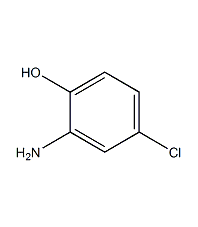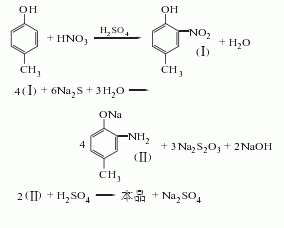
Structural formula
| Business number | 01TA |
|---|---|
| Molecular formula | C14H10Cl2O2 |
| Molecular weight | 281.13 |
| label |
Didi Didi Ai, 4-Chloro-?-(4-chlorophenyl)phenylacetic acid, 4-Chloro-?-(4-chlorophenyl)benzeneacetic acid, Dichlorodiphenylacetic acid |
Numbering system
CAS number:83-05-6
MDL number:MFCD00004248
EINECS number:201-451-8
RTECS number:AF5475000
BRN number:1913593
PubChem number:24861829
Physical property data
1. Character:White crystal
2. Density (g/mL,25/4?): Undetermined
3. Relative vapor density (g /mL,AIR= 1): Unsure
4. Melting point (ºC):167-169
5. Boiling point (ºC,Normal pressure): Unsure
6. Boiling point (ºC,5.2kPa): Unsure
7. Refractive index: Uncertain
8. Flashpoint (ºC): Unsure
9. Specific optical rotation (º): Unsure
10. Autoignition point or ignition temperature (ºC): Unsure
11. Vapor pressure (kPa,25ºC): Unsure
12. Saturated vapor pressure (kPa,60ºC): Unsure
13. Heat of combustion (KJ/mol): Unsure
14. Critical temperature (ºC): Unsure
15. Critical pressure (KPa): Unsure
16. Oil and water (octanol/Log value of water) partition coefficient: Uncertain
17. Explosion limit (%,V /V): Unsure
18. Lower explosion limit (%,V/V): Unsure
19. Solubility: Uncertain
Toxicological data
1, acute toxicity:
Rat caliber LD50: 740 mg/kg; mouse caliber LD50 ?5900 mg/kg
2, reproductive toxicity
Rat caliber TDL0: 250 mg/kg, pregnant 15-19 Queen of days; rat caliber TDL0: 350 mg/kg, mating 7 Queen of Heaven;
3, teratogenicity
Drosophila caliber3700 umol/ L; rat caliber 150 mg/L/24H
Ecological data
None yet
Molecular structure data
1. Molar refractive index ?71.55 2. Molar volume (m3/mol??204.6 3. isotonic specific volume (90.2K):550.3 4. Surface Tension (dyne/cm):52.3 5. Polarizability?10-24cm3):28.36
Compute chemical data
1. Hydrophobic parameter calculation reference value (XlogP): 4.5
2. Number of hydrogen bond donors:1
3. Number of hydrogen bond acceptors:2
4. Number of rotatable chemical bonds:3
5. Topological molecular polar surface area (TPSA): 37.3
6. Number of heavy atoms: 18
7. Surface charge:0
8. Complexity:258
9. Isotopes Number of atoms:0
10. OK Number of atomic stereocenters:0
11. No Determine the number of atomic stereocenters:0
12. OK Number of stereocenters of chemical bonds:0
13. Uncertain number of stereocenters of chemical bonds:0
14. Total Number of price key units:1
Properties and stability
None yet
Storage method
Should be sealed, dry and protected from light.
Synthesis method
None yet
Purpose
Pesticide residue Quantitative analysis standards.
extended-reading:https://www.bdmaee.net/tris-dimethylaminopropyl-hexahydrotriazine-cas-15875-13-5-triazine-catalyst/extended-reading:https://www.bdmaee.net/nt-cat-la-303-catalyst-cas1066-33-4-newtopchem/extended-reading:https://www.bdmaee.net/dabco-r-8020-catalyst-cas11125-17-8-evonik-germany/extended-reading:https://www.newtopchem.com/archives/category/products/page/39extended-reading:https://www.newtopchem.com/archives/424extended-reading:https://www.bdmaee.net/wp-content/uploads/2022/08/Dimorpholinyl-diethyl-ether-CAS-6425-39-4-22-bismorpholinyl-diethyl-ether.pdfextended-reading:https://www.newtopchem.com/archives/category/products/page/35extended-reading:https://www.bdmaee.net/wp-content/uploads/2022/08/27.jpgextended-reading:https://www.bdmaee.net/nt-cat-t-catalyst-cas10294-43-5-newtopchem/extended-reading:https://www.bdmaee.net/wp-content/uploads/2022/08/FASCAT4202-catalyst-CAS-77-58-7-dibutyl-tin-dilaurate.pdf





